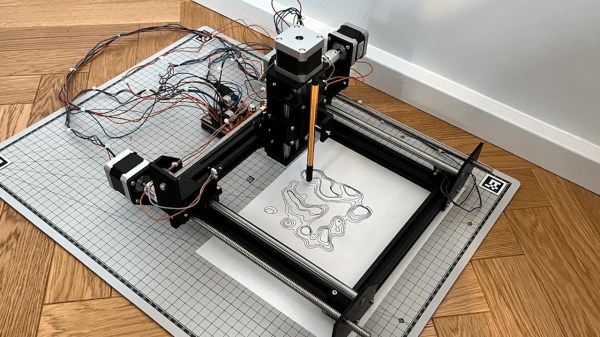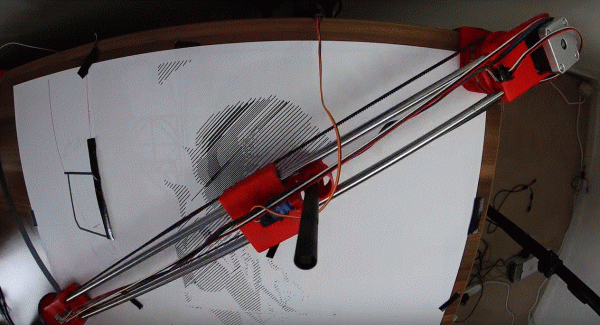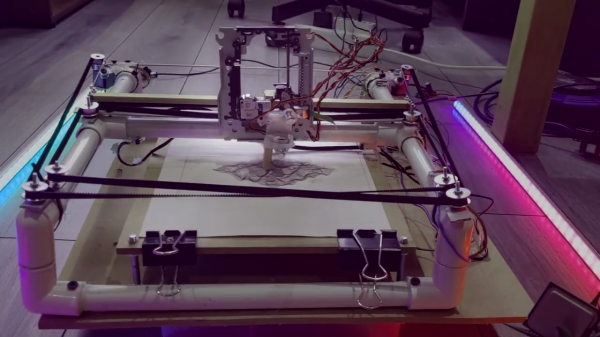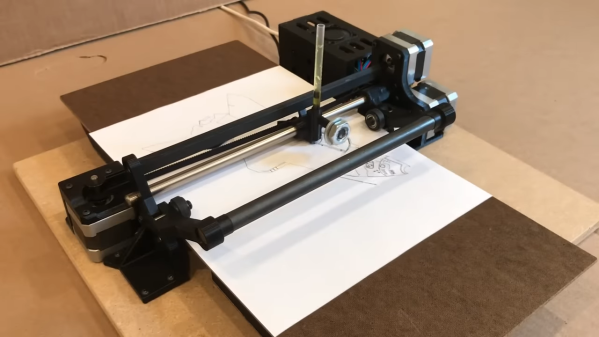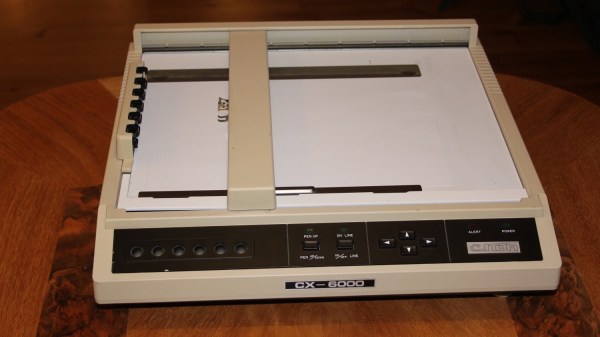Pen plotters are popular builds amongst DIY CNC enthusiasts. They’re a great way to learn the fundamentals of motion control and make something useful along the way. In that vein, [Maker101] has created a neat barebones plotter for tabletop use.
The basic design relies on familiar components. It uses a pair of MGN15 linear rails as the basis of the motion platform, along with NEMA 17 stepper motors to run the X and Y axes. These are assembled with the aid of 3D-printed parts that bring the whole frame together, along with a pen lifter operated with a hobby servo.
The neat thing about the design is that the barebones machine is designed to sit upon an existing tabletop. This eliminates the need to integrate a large flat work surface into the plotter itself. Instead, the X axis just runs along whatever surface you place it on, rolling on a small wheel. It’s likely not ideal for accuracy or performance; we could see the machine itself skating around if run too fast. For a lightweight barebones plotter, though, it works well enough.
If you dig building plotters, you might like to step up to something more laser-y in future. Video after the break.


